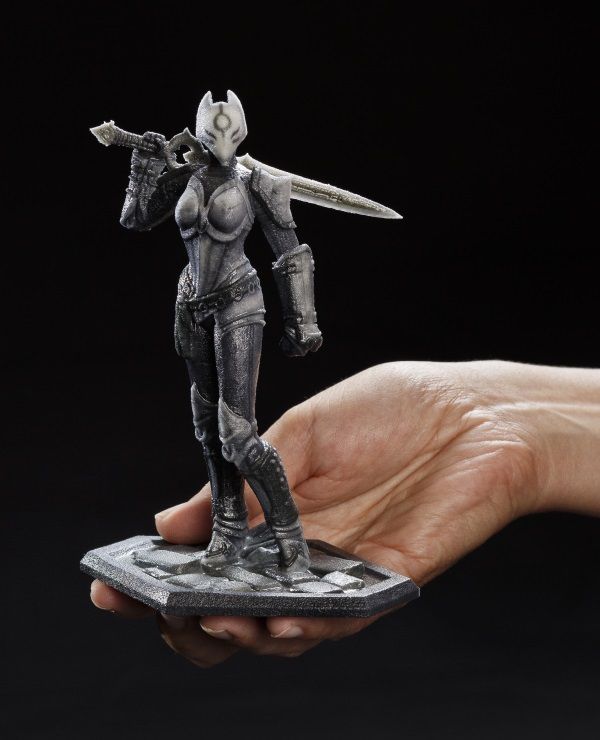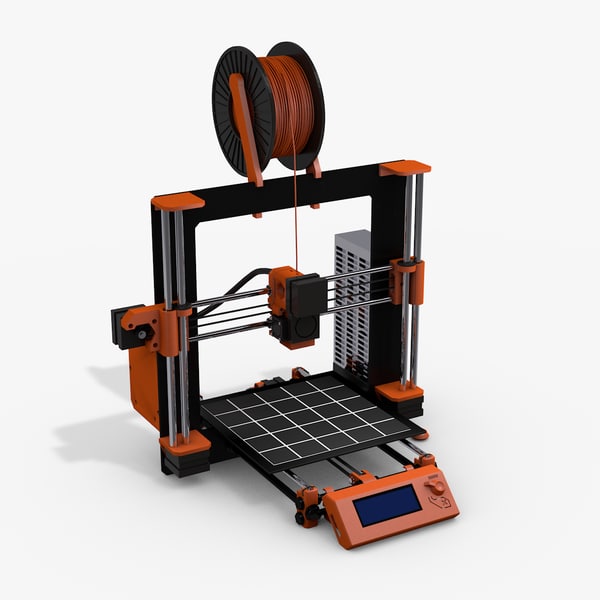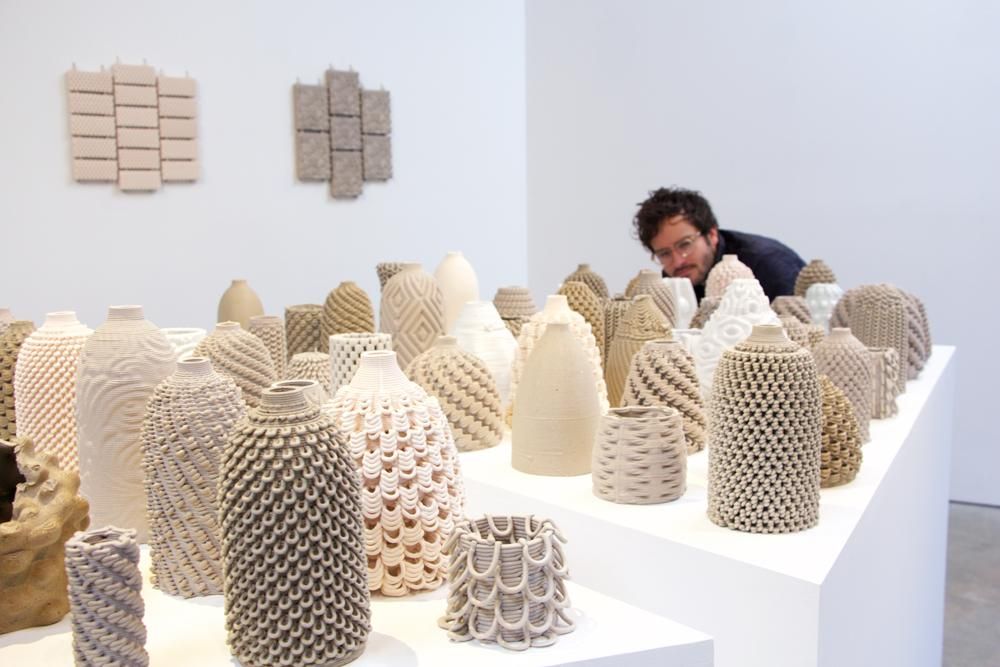3D printer collectibles
A Guide to Bringing Digital Models to Life
Over the last few years, 3D printers have become more affordable, easier to use, and more reliable. As a result, professionals in the entertainment industry, game designers, and hobbyists have embraced these technologies to create 3D printed miniatures.
This comprehensive guide to 3D printing miniatures and custom 3D figurines will show you how to bring your hyperrealistic digital models to life, which processes to use, how to post-process and paint your 3D prints, and where you can source 3D models for miniatures. Plus, the post will highlight other companies already using 3D printing to bring their digital models to life.
In several industries, 3D printing is emerging as a go-to technology for creating custom models. In the model-making and entertainment fields, 3D printing allows designers to create realistic, detailed, unique, and replicable figurines, miniatures, action figures, character models, sculptures, film props, stop-motion models, art, and decoration, all at a sustainable cost and with a fast turnaround.
The artists from Modern Life Workshop create hyper-realistic sculptures of actor Daniel Craig with ZBrush and 3D printing.
3D printing is also playing a transformative role in the movies and series industry. Props masters, such as Russell Bobbitt for Marvel movies and Jaco Snyman for the first season and the second season of the Raised by Wolves series, as well as visual effects (VFX) and design studio Aaron Sims Creative for Stranger Things, have adopted the technology, as it significantly saves time in prop making and fuels creativity in the design process. The creation becomes more flexible and fluid, and props and models can be created in an efficient manner.
A behind-the-scenes look at visual effects (VFX) and design studio Aaron Sims Creative’s process to design of Stranger Things’ Demogorgon.
“The Demogorgon was one of the first prints that we did. The first results were just amazing. The level of detail was something that I couldn't even imagine that you could get in a printer”
—Aaron Sims, Founder of Aaron Sims Creative
In gaming, online communities have sprung up around tabletop games like Dungeons & Dragons, for which gamers use 3D printers to create one-of-a-kind D&D 3D printed miniatures, figurines, terrains, landscapes, and other board game accessories.
A half-scale hand gripping a PlayStation controller designed and printed for an internal awards event at Sony Fabrication Arts.
Global play and entertainment company Hasbro also uses the technology to create Hasbro Selfie Series figures—a groundbreaking endeavor to use 3D printing to manufacture personalized action figures at scale. For the first time, fans are now able to scan their face with a smart device and have a custom-made look-a-like action figure delivered to their door.
Additive manufacturing offers great design and engineering opportunities for professionals and miniature-making enthusiasts, who will be thrilled to see the designs of their imaginations come to life in a 3D printer.
All 3D printing technologies use a process called additive manufacturing. 3D printers create three-dimensional parts from computer-aided design (CAD) models by successively adding material layer by layer until a physical part is created. Prop makers, game designers, and hobbyists can use the following 3D printer technologies to create various props, miniatures, and figurines.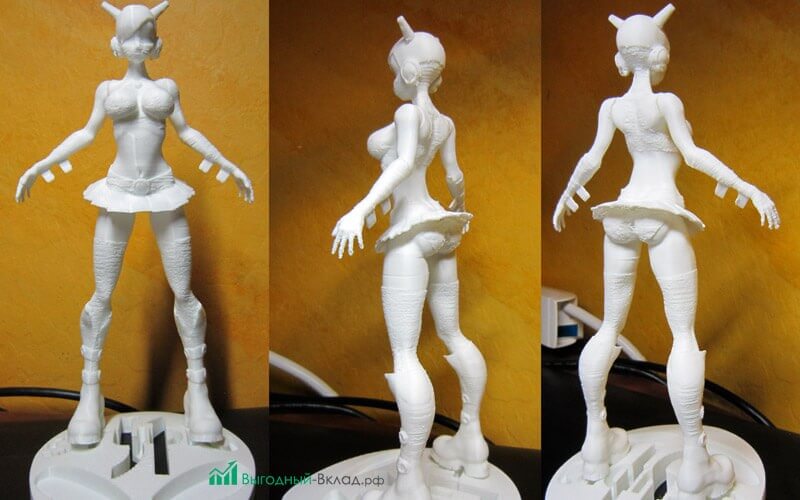
Creature and concept designer Jared Krichevsky uses a stereolithography (SLA) 3D printer to facilitate bringing digital models to life at Aaron Sims Creative.
Fused deposition modeling (FDM), also known as fused filament fabrication (FFF), is the most widely used form of 3D printing at the consumer level, fueled by the emergence of hobbyist 3D printers. FDM 3D printers build parts by melting and extruding thermoplastic filament, which a printer nozzle deposits layer by layer in the build area.
Compared to other 3D printing processes, FDM creates larger and more visible layer lines, leading to less-detailed end products. An FDM 3D printer is good for cheaply and quickly 3D printing miniatures for applications where fine surface details are less important.
Depending on your model, post-processing for FDM printing might only require support removal. However, complex figurines printed with an FDM printer require extra support structures, which can be difficult to remove and require sanding to get support marks off finished miniatures.
FDM printers are the least expensive option. A low-end hobbyist desktop FDM printer can cost less than $500, while a more professional FDM printer for 3D printing figurines can cost on average from $2,000-4,000.
A side-by-side comparison on FDM vs SLA 3D printed parts.
Stereolithography (SLA) printers are the most versatile and precise desktop 3D printers on the market. SLA printer technology uses vat photopolymerization, or resin printing, to cure liquid resin into hardened plastic using a laser. Resin 3D printing produces finely detailed miniatures and figurines with high surface quality using a range of advanced materials.
SLA 3D printers can create finely detailed miniatures and figurines with a smooth surface finish. Part printed on a Form 3 SLA 3D printer.
Resin 3D printers bring high-resolution for miniatures, figurines, and models. Even the smallest prints have a high level of detail.
A 3D printed figurine from an SLA printer will require a medium-length post-curing process, but automated post-curing options are available.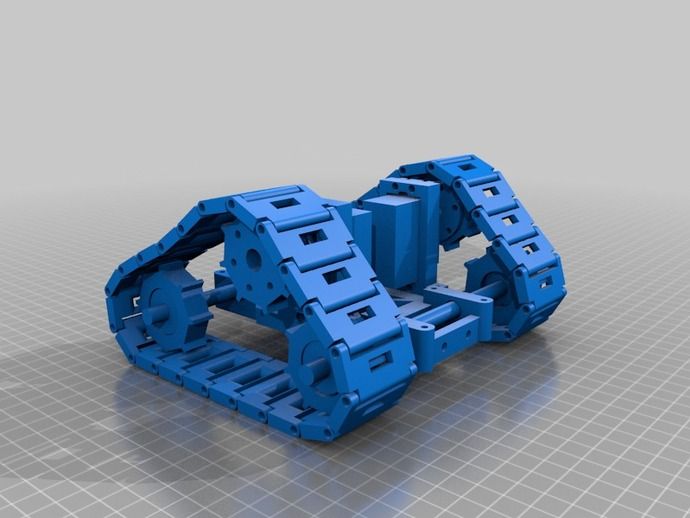 Support structures from SLA printers, especially from low force stereolithography (LFS) printers like the Formlabs Form 3 and Form 3L, are easy to remove.
Support structures from SLA printers, especially from low force stereolithography (LFS) printers like the Formlabs Form 3 and Form 3L, are easy to remove.
SLA 3D printers also offer a wide range of materials, empowering applications outside of traditional 3D printing like silicone molding, pewter casting, or lost-wax casting.
A high-resolution quality desktop SLA 3D printer from Formlabs for miniatures and figurines price starts at $3,499, while large-format SLA 3D printers start at $10,999.
Jaco Snyman, founder of Dreamsmith Studio, shows how he used 3D printing behind the scenes for the HBO Max’s Raised by Wolves series.
“For bigger, less detailed things or as part of mold-making workflows, I use FDM 3D printers. I mostly use Formlabs [SLA] 3D printers to print final parts, because you get such a nice finish.”
—Jaco Snyman, founder of Dreamsmith and lead Prosthetics Designer of the Raised by Wolves series
Sample part
White Resin is one of the most popular resins for model making.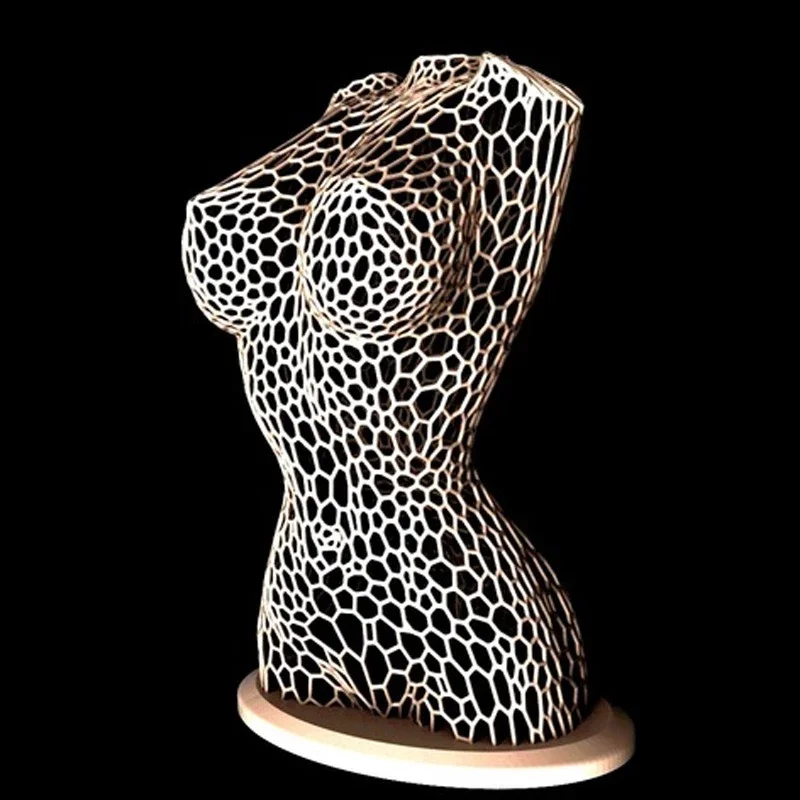 See and feel White Resin for yourself by requesting a free sample part.
See and feel White Resin for yourself by requesting a free sample part.
Request a Free Sample Part
Selective laser sintering (SLS) uses a high-powered laser to fuse small particles of polymer powder. As the unfused powder supports the part during printing, there’s no need for dedicated support structures. This makes powder 3D printing ideal for intricate models and complex geometries, including interior features, undercuts, thin walls, and negative features.
SLS 3D printing is ideal for intricate models and complex geometries. Part printed on a Fuse 1 SLS 3D printer.
SLS parts have a slightly grainy surface finish, but almost no visible layer lines. The most common material for selective laser sintering is nylon, a highly capable engineering thermoplastic for both functional prototyping and end-use production.
Because SLS printers are industrial machines, the entry price used to be higher, starting at around $100,000 and making it inaccessible for many businesses. However, Formlabs has recently introduced the Formlabs Fuse 1 to bridge this gap with the first benchtop industrial SLS 3D printer that offers high quality at a fraction of the cost of traditional industrial SLS systems, starting at $18,499.
However, Formlabs has recently introduced the Formlabs Fuse 1 to bridge this gap with the first benchtop industrial SLS 3D printer that offers high quality at a fraction of the cost of traditional industrial SLS systems, starting at $18,499.
Binder jetting is similar to SLS printing, but uses a binding agent to bond the powder material instead of heat. In model making, binder jetting is most commonly used for creating full-color 3D printed figurines and miniatures out of sandstone material.
Just like SLS, binder jetting requires no support structures, as the surrounding powder provides the necessary model support. However, parts that come off a binder jetting printer are very brittle and have high porosity. This means that the process is not ideal for complex designs, as the parts may fracture in the post-processing due to the brittleness of the material.
Binder jetting 3D printers are expensive industrial machines, with prices ranging from $30,000 to $100,000+.
Figurines 3D printed with binder jetting.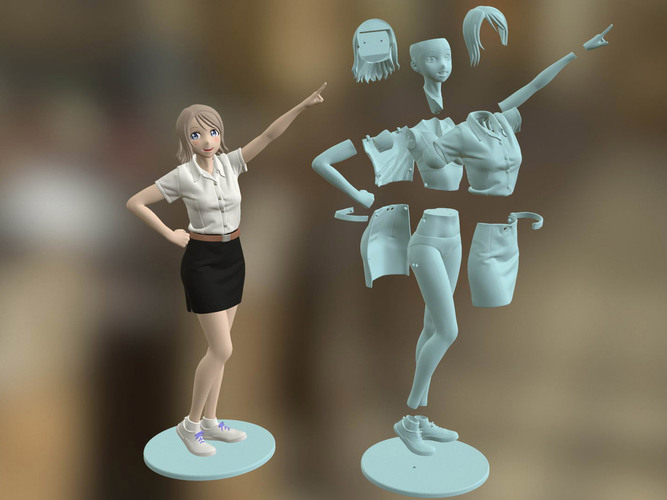 (source: Shapeways)
(source: Shapeways)
| Fused Deposition Modeling (FDM) | Stereolithography (SLA) | Selective Laser Sintering (SLS) | Binder Jetting | |
|---|---|---|---|---|
| Resolution | ★★☆☆☆ | ★★★★★ | ★★★★☆ | ★★★☆☆ |
| Surface Finish | ★★☆☆☆ | ★★★★★ | ★★★★☆ | ★★★★☆ |
| Complex Designs | ★★★☆☆ | ★★★★☆ | ★★★★★ | ★★★☆☆ |
| Ease of Use | ★★★★★ | ★★★★★ | ★★★★☆ | ★★★☆☆ |
| Ideal for | Low-cost, simple models with less details | Finely detailed miniatures and figurines with high surface quality at an affordable price | Complex geometries and durable end-use parts | Full-color 3D printed figurines out of sandstone |
| Cost | $500-$2,000 starting equipment cost | $3,750 starting equipment cost | $18,500 starting equipment cost | $60,000 starting equipment cost |
Video Guide
Having trouble finding the best 3D printing technology for your needs? In this video guide, we compare FDM, SLA, and SLS technologies across popular buying considerations.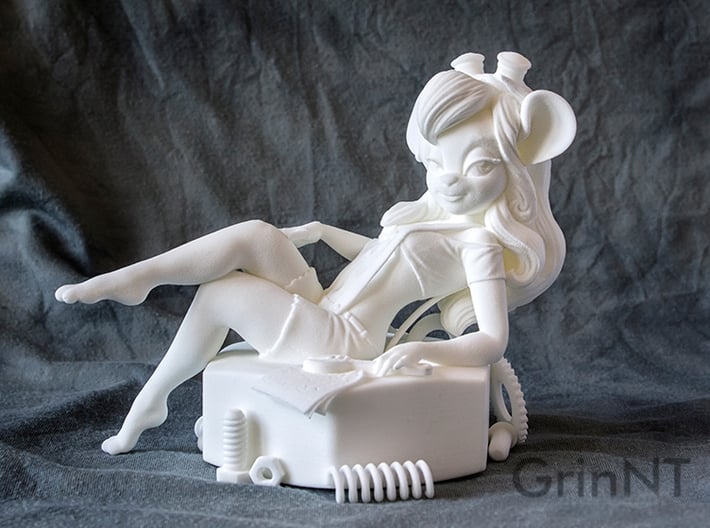
Watch the Videos
The level of detail and precision needed for printing miniatures can be challenging. Beyond the printing process, post-processing will have a high impact on the final miniature. Here are some tips on how to better 3D print and prepare miniatures.
Highly detailed Hulk figurine done with 3D printing by Aarom Sims Creative.
Two major factors impact the quality of your 3D prints: layer lines and support structures.
The thicker the layers you use for your 3D printed figure, the more visible your layer lines will be. Thick layer lines create a “staircase” effect on a flat or slanted surface or cause round surfaces to appear “pixelated.” Smaller layer thickness will lead to higher surface quality and more polished prints.
FDM printing tends to use thicker layers and the layer lines are more visible even at the same layer height due to the way the parts are formed. SLA printers can print at a variety of layer thicknesses, including incredibly thin 25-micron layers, depending on the desired print quality, which makes it the ideal choice for showcasing the best details. SLS and binder jetting printers print at around 100-110 micron layers, but the layer lines are mostly invisible on final parts.
SLS and binder jetting printers print at around 100-110 micron layers, but the layer lines are mostly invisible on final parts.
In FDM and SLA printers, 3D prints include support structures to scaffold the part during the print process. You will need to remove these support structures, which can be difficult for FDM prints and fairly easy for SLA prints (depending on part orientation). A more complicated support removal will leave marks on the finished product, which you must sand and polish for high-quality finishes.
Support removal with a part printed on the Form 3 SLA 3D printer.
Your models will not be complete without the perfect finish. After printing, post-processing the miniatures with priming and painting will give a final flawless touch and the customization to make them truly unique.
Priming a 3D printed miniature before painting.
You can finish a 3D printed figurine in whatever way supports the end goal of your 3D print. Many models look great straight out of the printer, but you can enhance your miniatures by painting them.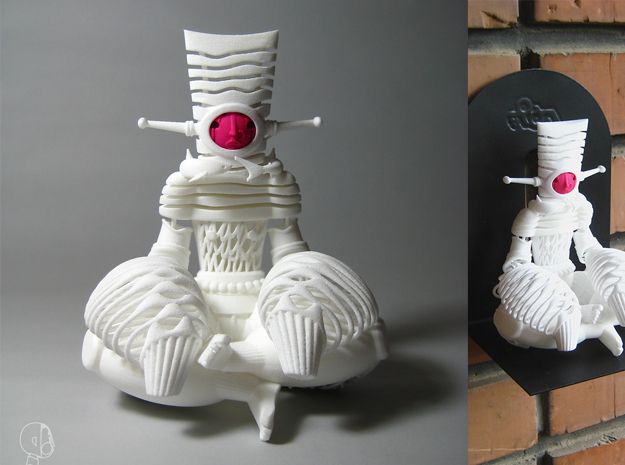
Before you paint, remove all support structures from your 3D printed figurines, and then sand the figurines to eliminate support-structure marks. The amount of sanding and polishing will depend on the object’s finish. For FDM prints, you may have to do some extra sanding to reduce the “staircase” effect of layer lines, while SLA prints should have a smooth surface right away.
After you sand your 3D miniature, we recommend applying a primer. Choosing the right primer will help your 3D printed miniature achieve a professional-grade finish.
See why priming makes painting 3D printed parts effortless and helps create a flawless final surface.
Side by side comparison on the before and after painting a 3D printed dinosaur miniature.
For detailed hand painting of your 3D printed miniature, acrylic paint is a versatile option. Acrylic paint usually binds well to plastic, but always check that the paint you have selected lists “plastic” or “multisurface” functionality, and always prime before you paint.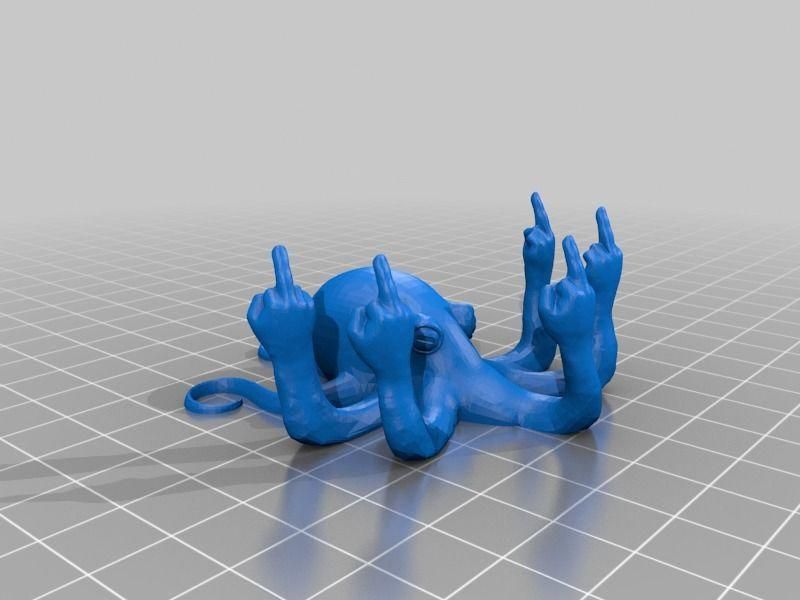
Spray paint, when applied correctly, can also give your custom miniature a smooth, glossy, and consistent finish. Your spray paint finish can approach professional quality if you apply a good primer and a thick undercoat for color consistency. Always finish with a blemish-resistant topcoat.
See how to transform your miniature from a simple 3D print to a colorful model ready to display with spray painting.
3D printing always starts with a digital model. You can download a free or paid miniature model, design the model yourself, or even scan an existing object and turn it into a 3D file.
If you are at the beginning of your 3D printing journey, downloading premade designs can make printing easy. Huge online communities exist around gaming miniatures, such as Dungeons & Dragons figurines. Checking communities like Pinshape, MyMiniFactory, Cults, or Thingiverse is a great way to find free 3D miniature model designs for your own prints.
Forest Dragon 3D model, available for free download in Pinshape (Design by Dutchmogul).
Aaron Sims Creative creating the Stranger Things’ Monster digital 3D assets for 3D printing.
The right 3D modeling software will help you design your own custom miniatures that are ready for 3D printing. If you are creating miniatures, you need detailed design capabilities. CAD software that specializes in video game design or animation often provides the granular tools necessary for creating realistic miniatures.
For example, ZBrush is a digital sculpting tool that combines multiple artistic techniques to create high-resolution models. Users mainly design for movies, games, and animations on ZBrush, making it ideal for realistic figurines. You can learn more about how ZBrush is used for digital sculpting, modeling, and rapid visualization in this webinar.
Webinar
ZBrush gives artists the freedom to push the limits of digital modeling. Until recently, the power to bring complex concepts beyond the computer screen has been inaccessible and cost-prohibitive.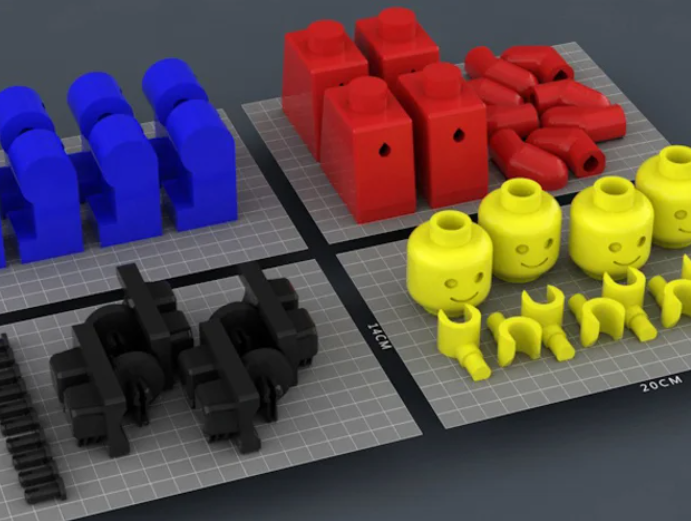
Watch the Webinar
A custom 3D print does not need to be based on a completely original digital design. Instead, you can also 3D scan an existing object. There are many scanning options available, from low-cost depth-sensing cameras and photogrammetry to high-definition professional scanners.
Before 3D printing a part, you’ll often need to adapt, optimize, and finalize 3D scans. With Meshmixer, it’s not only possible to optimize a triangle mesh but also to resculpt entire sections, stylize the model, or add useful features to it.
Whether you are a professional sculptor, a model maker, an enthusiastic hobbyist, or a gamer, SLA 3D printing is an ideal tool to bring hyper-realistic digital models to life in a matter of hours, right on your desktop.
Start 3D printing your own custom miniatures and figurines with the Form 3 with incredible detail at an affordable price point, and bring your biggest ideas to life with the Form 3L.
See the Form 3See the Form 3L
3d Printed Figures - Etsy.
 de
deEtsy is no longer supporting older versions of your web browser in order to ensure that user data remains secure. Please update to the latest version.
Take full advantage of our site features by enabling JavaScript.
Find something memorable, join a community doing good.
(1,000+ relevant results)
Related to 3d printed figures
- 3d printed jewelry
- 3d printing
The best 3D printers for home, office or studio
How often have you thought about buying a 3D printer? There is nothing surprising if such a thought periodically visited you.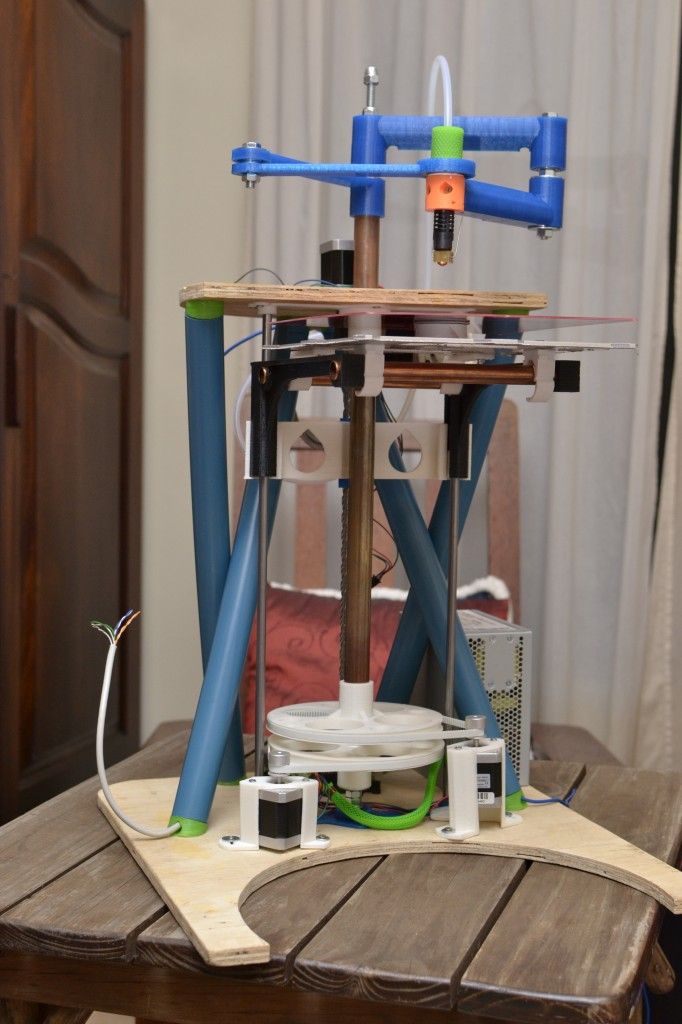 Today, 3D printing has gone beyond the geek toy it once was, and the 3D printer has become a truly useful device for many creative people. Such printers can be used not only to produce parts for all kinds of design projects, but also to print useful home appliances. In addition, the ability to print with consumables such as metal, rubber, or even biodegradable filaments means that finished products will be strong and durable. And if you are an experienced 3D artist or designer, you can combine your skills and the capabilities of a 3D printer to the maximum.
Today, 3D printing has gone beyond the geek toy it once was, and the 3D printer has become a truly useful device for many creative people. Such printers can be used not only to produce parts for all kinds of design projects, but also to print useful home appliances. In addition, the ability to print with consumables such as metal, rubber, or even biodegradable filaments means that finished products will be strong and durable. And if you are an experienced 3D artist or designer, you can combine your skills and the capabilities of a 3D printer to the maximum.
Be aware that not all 3D printers work the same way. Some use spools of plastic filament that is heated like a hot glue gun and then laid out in layers on the print bed. The print quality of such devices can be good, but some manual processing is often required to smooth out the layer lines. Some models use an LCD screen to shine light onto the resin, while other printers use a laser to solidify the melted resin.
If you do not want to do modeling, then the abundance of marketplaces with ready-made 3D models will allow you to get good results. Thingiverse, CG Trader and many other sites offer all sorts of models in .stl format that you can print with just a few clicks. Very often you can find free models.
Thingiverse, CG Trader and many other sites offer all sorts of models in .stl format that you can print with just a few clicks. Very often you can find free models.
Anycubic Vyper
Budget printer with good features
Price: $399.
Print volume: 245x245x260 mm.
Layer thickness: 100 µm.
Pros:
- self-levelling bed included,
- excellent level of detail,
- good print speed.
Cons:
- the need for self-assembly.
All Anycubic 3D printers are good options, but as the most affordable FDM printer, the Vyper is the best deal. It has features not found in more expensive options, and produces prints with great detail and clarity, while doing so with minimal noise. The heated self-levelling print bed is a great feature, but adding a magnetic spring steel sheet to make it easier to remove prints is a win-win.
Ultimaker S3
Best solution for general 3D printing tasks
Price: $4,080.
Print volume: 230x190x200 mm.
Layer thickness: 20 µm.
Pros:
- double extruders make life easier,
- is an excellent self-leveling heated build platform.
Cons:
- not the cheapest option,
- noise level is higher than some other printers.
Ultimaker printers come in a variety of sizes and capabilities, but the Ultimaker 3 is the model we deliberately included in our list of the best 3D printers. A 3D printer has most of the features you want from larger brethren, including dual extruders and nozzles of various sizes. This means that you can print models that would be difficult to print using PVA plastic, which dissolves in water. The Ultimaker 3 also has a print progress camera, a great touch screen interface and a solid build. If you need to master large volumes of printing, then choose the advanced version, which is a little more expensive.
Elegoo Mars 2 Pro
Best Resin Printing Solution
Price: $329.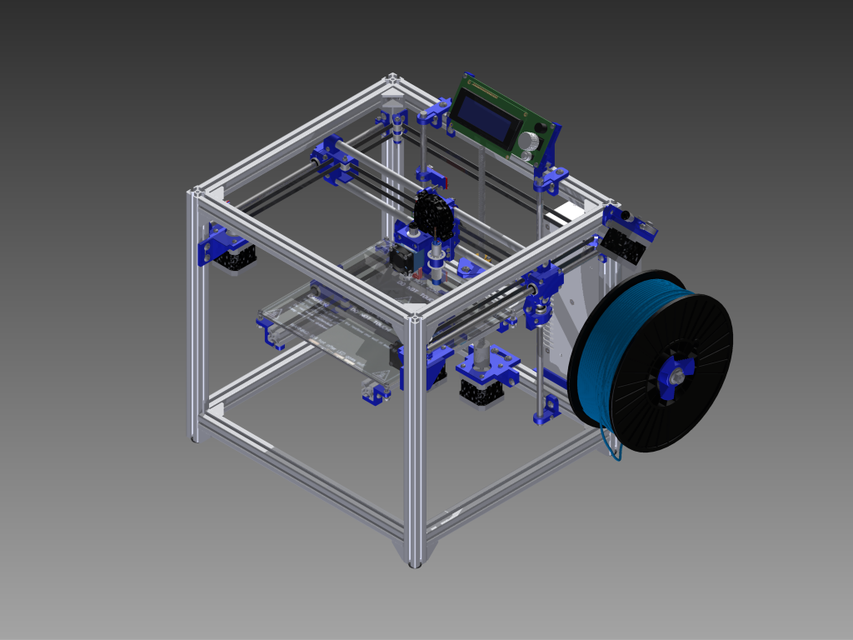 99.
99.
Print volume: 129x80x160 mm.
Layer thickness: 50 µm
Pros:
- excellent print quality at a reasonable price,
- fast printing at 1-2 seconds per layer.
Cons:
- the need for self-assembly,
- Printing smoke can be annoying.
Elegoo is relatively new to the 3D printing market, but the original Mars printer made a good impression on the community. Mars 2 Pro only confirms the serious intentions of the manufacturer. The new 6” screen prints a layer in less than 2 seconds with no loss of clarity or blur, making this 3D printer one of the fastest resin printers around. In terms of prototyping speed, it's hard to beat unless you need larger objects, as the only real downside to the Mars 2 Pro is the small amount of printed assembly. Smoke when printing is typical for this type of printer.
Makerbot Replicator+
Universal 3D printer with FDM
Technology: 4500 dollars
Press volume: 295x195x165 mm
layer thickness: 100 μm
Plus:
- Building fees, gather
- lots of connection options.
Cons:
- takes up more space than most competitors,
- is not the cheapest option.
Makerbot has been around for a long time and is probably the best-known manufacturer of consumer 3D printers. Even Anna Kendrick used it in space in the movie Stowaway. Experience in this area has allowed Makerbot to maintain a similar area to previous models, but increase the volume of printing and reduce the noise level. This model provides a large number of connectivity options, including Wi-Fi. The Makerbot Replicator+ even has a camera so you can watch what's going on remotely. Printing results are good and need only a little manual refinement, because this is an FDM printer. The Replicator+ is a great and reliable option if you are looking to purchase a 3D printer for your home office, school or workshop.
Anycubic Photon mono SE
Best choice for printing 3D miniatures
Price: $449.89
Print volume: 130x78x160 mm.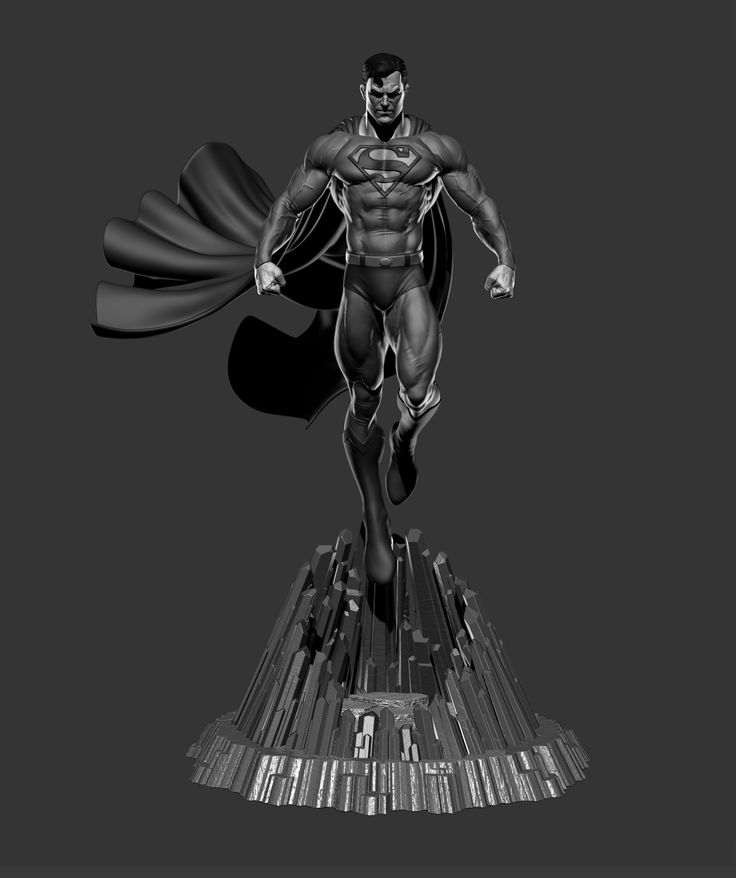
Layer thickness: 100 µm.
Pros:
- excellent level of detail,
- smooth surface.
Cons:
- pairs of highlights during printing can be unbearable,
- resin is expensive. Anycubic's
Photo Mono SE is a great choice if you like custom toys, collectibles or action figures from PC games as the detail on this printer is fantastic. Like other monochrome printers, it is fast enough. It only takes about a second to print one layer. The resin may have an unpleasant odor, but you can place the printer under an air exhaust cabinet. This is a small sacrifice for such a productive machine, which is really worth the money spent.
Markforged Onyx One
Best Metal Printer
Price: $4,794.
Print volume: 320x132x154 mm.
Layer thickness: 100-200 µm.
Pros:
- reliable and durable prints,
- all in one desktop case.
Cons:
- expensive,
- metal filament spools are expensive.
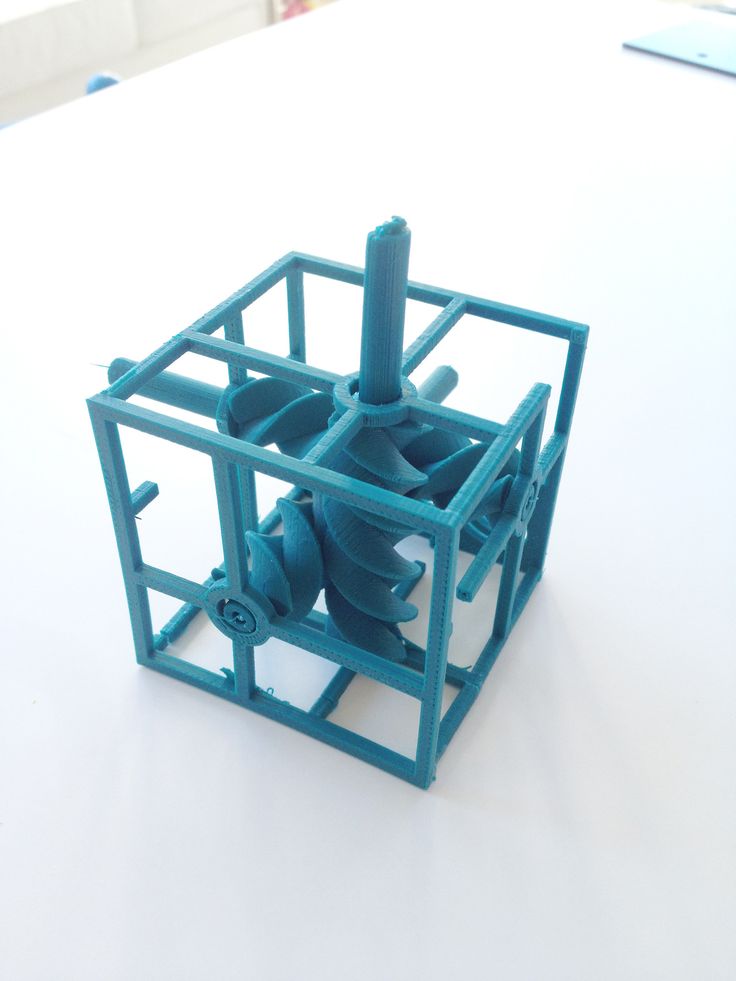
Onyx One prints out of durable metal, but the parts are actually carbon fiber. The main reason for choosing this technology is that although powdered metal filaments are available, they instantly destroy extruder nozzles, making the production of metal objects prohibitively expensive. Markforged solves this problem with a best-in-class desktop solution. So if you're looking for durable and reliable parts, this printer should be on your list. Just remember that a spool of filament can be quite expensive.
Creality Ender 3
Best Budget FDM 3D Printer
Price: $223.
Print volume: 220x220x250 mm.
Layer thickness: 100 µm.
Pros:
- high quality components,
- ease of use.
Cons:
- open chassis,
- The typing sound can be quite loud.
Ender's line of 3D printers are renowned for their superior performance at an affordable price. And Ender 3 is a perfect example of this. At this price, you would think that Black Friday lasts all year round. Creality has somehow managed to inject some of the highest quality components into Ender 3. The printer comes in kit form, which may not be to everyone's liking, but the assembly process actually gives you a good idea of how the printer works and can help with troubleshooting if there are any in the future.
At this price, you would think that Black Friday lasts all year round. Creality has somehow managed to inject some of the highest quality components into Ender 3. The printer comes in kit form, which may not be to everyone's liking, but the assembly process actually gives you a good idea of how the printer works and can help with troubleshooting if there are any in the future.
Formlabs Form 3
Best SLA Printer
Price: $3499.
Print volume: 145x145x185 mm.
Layer thickness: 15 µm.
Pros:
- easy replacement of material cartridges,
- no layer visibility.
Cons:
- expensive,
- additional costs for obtaining a medical version.
Formlabs Form 3 and its predecessor Form 2 set the benchmark for SLA printers (3D printing technology based on the layer-by-layer curing of a liquid material under the action of a laser beam). And the FormLabs Form 3 is by far the best printer on the market.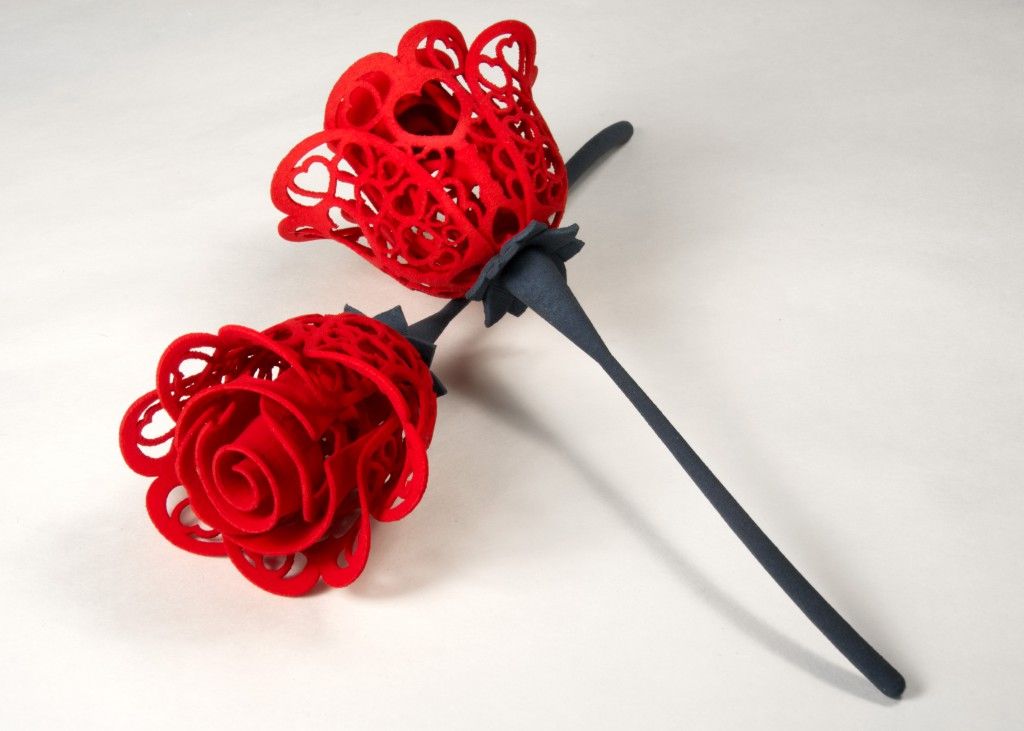 This is a rather expensive product, but the quality of the results speaks for itself. Products are obtained with invisible layers, and the printer itself is equipped with a system that allows you to remove the finished product without the use of cutters. In addition to the impeccable print quality, the big advantage here is the ease of use. Changing media is as easy as replacing a cartridge on a conventional printer. For a little more, you will have access to biomaterials for use in dentistry and medicine. Oh, and the PreForm software is simple and intuitive too.
This is a rather expensive product, but the quality of the results speaks for itself. Products are obtained with invisible layers, and the printer itself is equipped with a system that allows you to remove the finished product without the use of cutters. In addition to the impeccable print quality, the big advantage here is the ease of use. Changing media is as easy as replacing a cartridge on a conventional printer. For a little more, you will have access to biomaterials for use in dentistry and medicine. Oh, and the PreForm software is simple and intuitive too.
3Doodler
Best Portable 3D Printer
Price: $49.99
Pros:
- you can take it anywhere,
- No print volume limit.
Cons:
- expensive consumables,
- print quality is up to you.
One of the biggest limitations for 3D printing is the fixed volume. But since 3Doodler is a 3D printing pen, here you can print projects of any size. The cost of consumables can be quite high, especially if you are trying to model a car in 1:1 scale. What's more, it's fantastic fun to pick up a pen from a table top and draw lines in the air with plastic ink. The threads come in different colors, so you can consider it an added plus. But the downside is that you will have to rely only on yourself for printing accuracy, since the extruder is entirely in your hands, and not on rails. Several models are available, including 3Doodler Start (for kids) and a Pro version.
The cost of consumables can be quite high, especially if you are trying to model a car in 1:1 scale. What's more, it's fantastic fun to pick up a pen from a table top and draw lines in the air with plastic ink. The threads come in different colors, so you can consider it an added plus. But the downside is that you will have to rely only on yourself for printing accuracy, since the extruder is entirely in your hands, and not on rails. Several models are available, including 3Doodler Start (for kids) and a Pro version.
EasythreeD K5
Best budget option, safe for kids
Price: $99.99.
Print volume: 80x80x100 mm.
Layer thickness: 100-400 µm.
Pros:
- affordable entry point to 3D printing,
- fun and safety for kids.
Cons:
- tiny build platform,
- medium print quality.
It's hard not to love the EasythreeD K5 for its attractive looks and ease of use.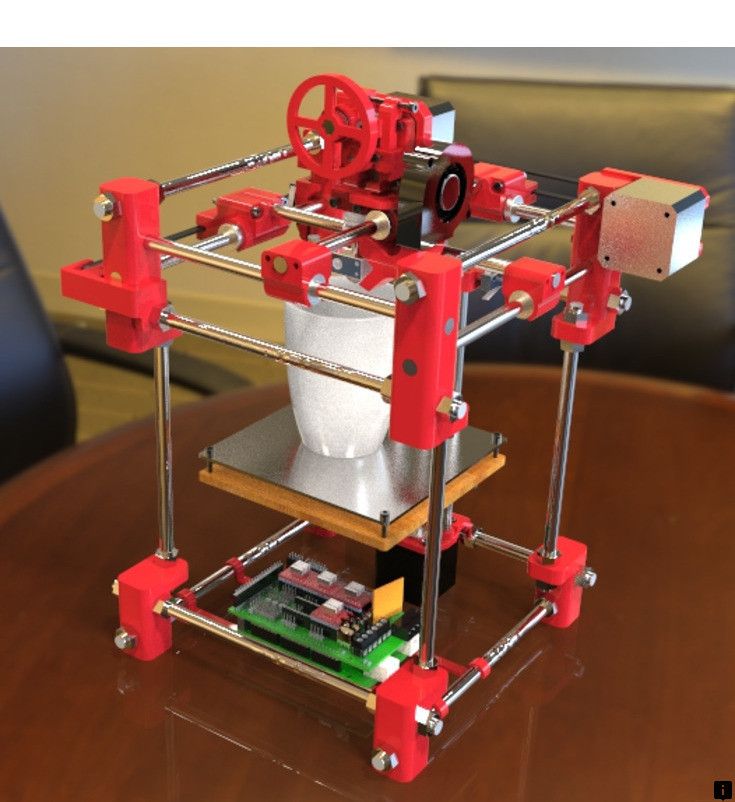 This model on our list of the best 3D printers won't cost you much more than a couple of weeks of buying coffee to go. This is an enjoyable first 3D printing experience, so the device can be forgiven for its tiny printable area.
This model on our list of the best 3D printers won't cost you much more than a couple of weeks of buying coffee to go. This is an enjoyable first 3D printing experience, so the device can be forgiven for its tiny printable area.
how to use it at work and at home
3D printing technology is the door to the future, which opens up truly limitless possibilities for businesses and consumers. Today, 3D scanning and printing are already widely used in the production of design models, metal parts, dental devices, jewelry and souvenirs, and even confectionery.
The operation of a 3D printer is based on the principle of creating a model of an object or product from various materials based on its three-dimensional image. A special program breaks the object into separate layers, then each layer is printed on a 3D printer in turn. There is a so-called "growing" of the part in the printer. A finished part or prototype can be obtained from a fairly wide range of materials: polymer powders, plastic, paper, wax, ceramic powders, metals. Today, there are a number of technologies that are used in 3D printers, of which the most popular are MJM, SLS, CJP.
Today, there are a number of technologies that are used in 3D printers, of which the most popular are MJM, SLS, CJP.
According to research by Markets & Markets, the 3D printing market will grow by 23% annually, growing to $8.4 billion by 2020. The driver of growth is the patent collapse scheduled for 2014. This year, patents for some 3D printing technologies expire, in particular for the selective laser sintering (SLS) method, which will activate the further development of 3D printing and the development of new competitive technologies.
SLS printer
"In 2014, the patent protection of many 3D printing technologies ends, which will give an incredible impetus to the market. After all, any openness is a kind of impetus for the development of technology," said Evgeny Kozhukhovsky, CEO of Smartprint.
China is already gearing up for other companies to use proprietary 3D printing technologies. And they enter the market with completely different prices. "Many companies that cannot afford a half-million-dollar printer today can buy a Chinese one for $50,000 (we are talking about professional printers - ed.)," Kozhukhovsky said.
"Many companies that cannot afford a half-million-dollar printer today can buy a Chinese one for $50,000 (we are talking about professional printers - ed.)," Kozhukhovsky said.
According to Markets & Markets, most of the 3D printing market is in the US, followed by Europe. According to the company's forecasts, by 2020 the European market will surpass the American one. However, companies from the Asia-Pacific region are the fastest growing and most promising.
Currently, the largest players in the global 3D printing market are the American companies 3D Systems, Stratasys, ExOne and Optomec, the German companies Envisiontec, EOS and MicroTec, the Belgian companies Layerwise and Materialize and the Swiss company Arcam.
Already today, 3D printing is used in such industries as medicine (printing a plaster substitute for fixing fractures, prostheses, human organs), jewelry (printing in gold and silver), fashion industry (printing clothes, mannequins), mechanical engineering ( metal printing, microprinting), car market (printing of spare parts and whole cars), construction (printing both layouts and finished houses), food industry (food printing).